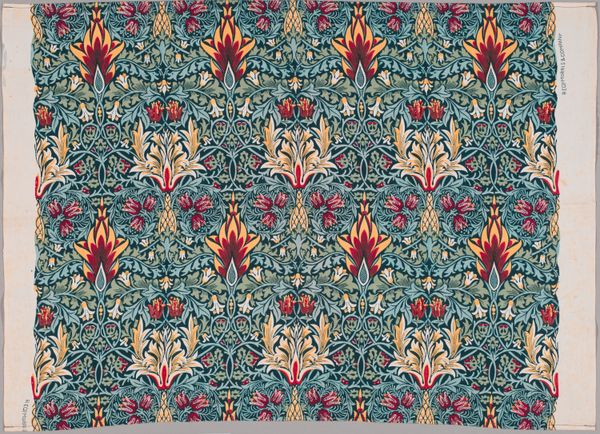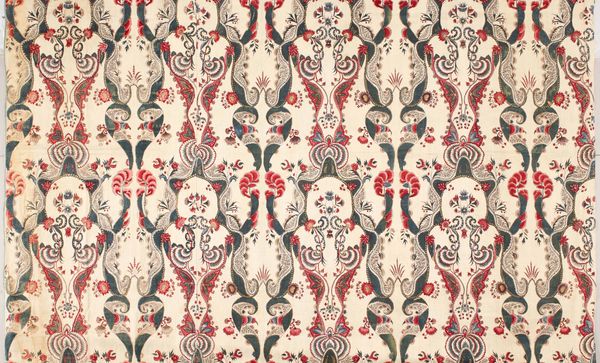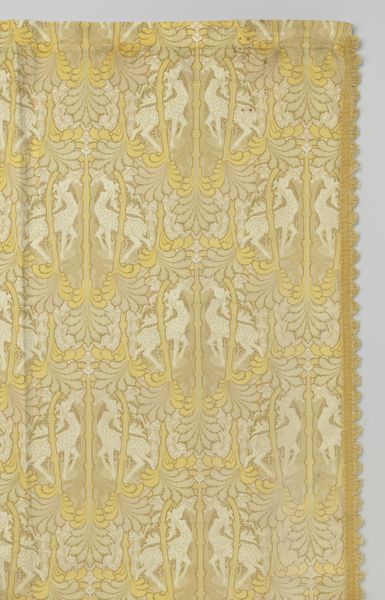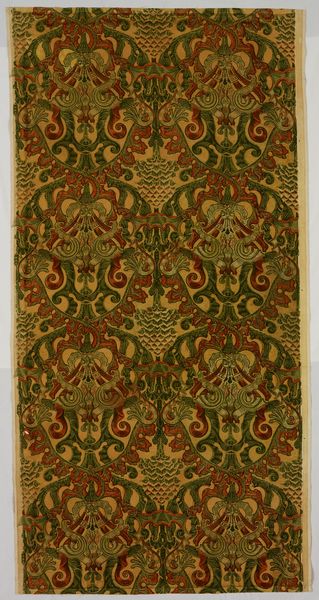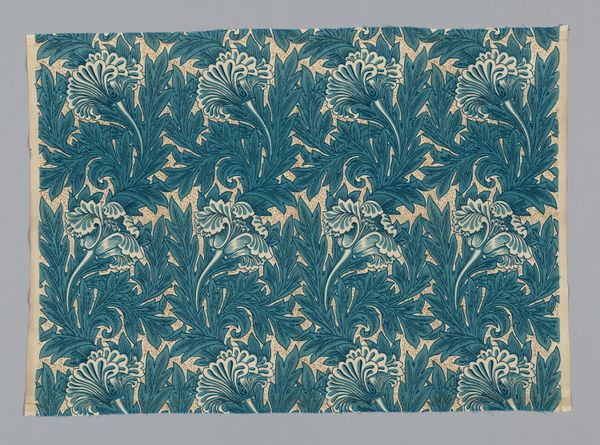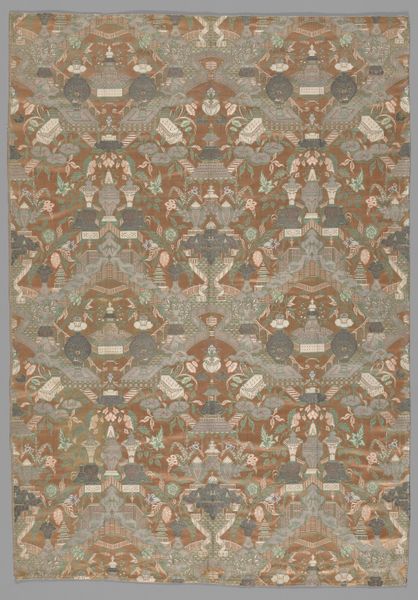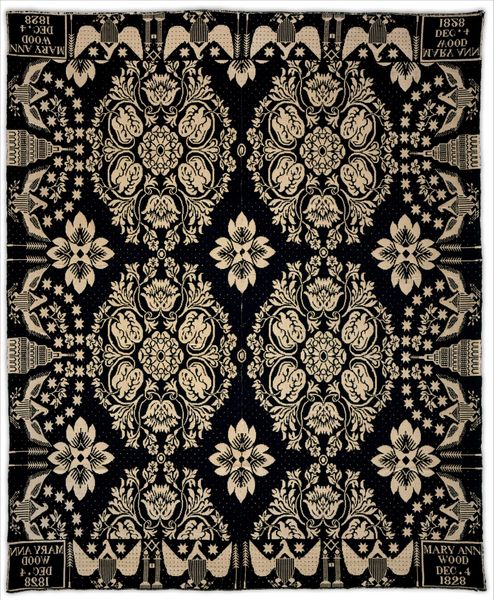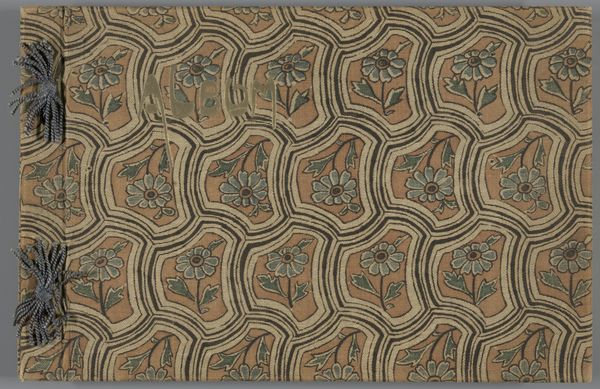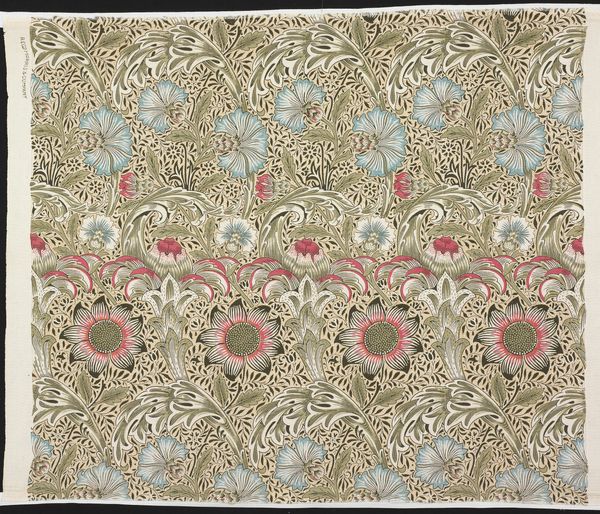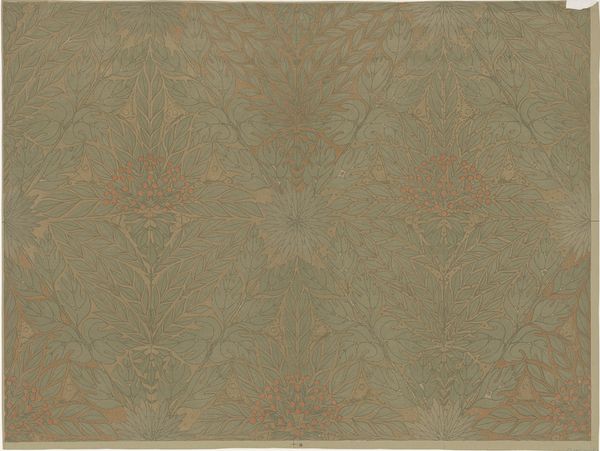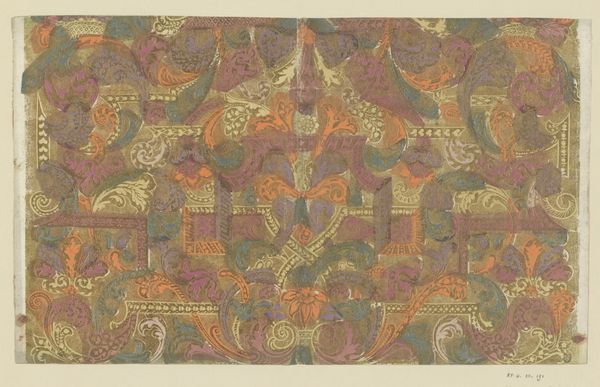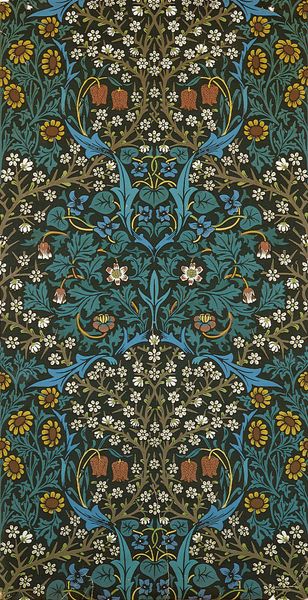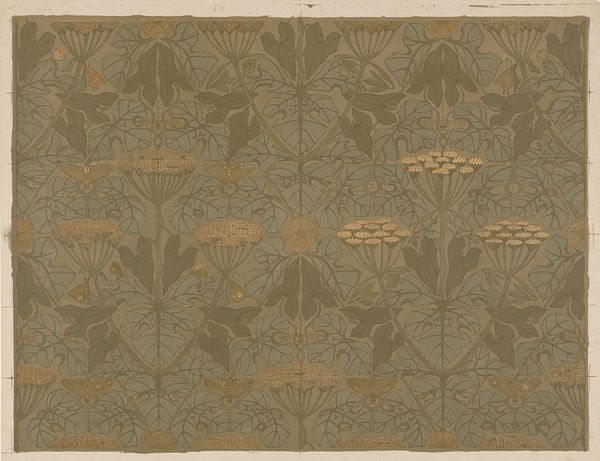
Chicago Stock Exchange Trading Room: Stencil 1893 - 1894
0:00
0:00
graphic-art, stencil, architecture
#
pattern heavy
#
graphic-art
#
natural stone pattern
#
wood texture
#
art-nouveau
#
16_19th-century
#
stencil
#
geometric pattern
#
abstract pattern
#
organic pattern
#
arch
#
vertical pattern
#
men
#
wooden texture
#
united-states
#
pattern repetition
#
decorative-art
#
layered pattern
#
architecture
Dimensions: 145.42 × 307.42 cm (57 1/4 × 121 in.)
Copyright: Public Domain
Editor: This intricate stencil, designed by Adler & Sullivan for the Chicago Stock Exchange Trading Room, dates back to 1893-1894. The overlapping layers and different motifs feel overwhelmingly decorative. What do you make of it? Curator: It's fascinating to consider this piece within the context of late 19th-century American architecture and its relationship to social power. Remember, the Chicago Stock Exchange represented immense wealth and the ambition of a burgeoning metropolis. Does this ornate stencil challenge or reinforce those notions of power in your view? Editor: Well, it's undeniably beautiful, but also feels… almost excessive. It seems designed to impress, to overwhelm. Was that a common feeling associated with buildings of that era? Curator: Precisely! Think about the architectural styles that dominated that era - neoclassicism, for instance. Buildings weren't just structures; they were statements. Decoration was meticulously planned to convey a sense of authority and permanence. How do you think the destruction of the Chicago Stock Exchange in 1972 impacted this stencil's legacy, making it a museum piece rather than functional architecture? Editor: That's a powerful question. It transforms from something functional, supporting the power of the Exchange, into a historical artifact reflecting on a lost past. It democratizes the artwork to a degree. Curator: Exactly. What was once intended to embody corporate power now exists in a public institution, open to interpretation and critique. This invites a broader conversation about the relationship between art, architecture, and the shifting nature of power. Editor: This perspective is transformative! It encourages thinking about how art acts as a marker of social change, a record keeper of ideologies that shifts throughout time. Curator: Yes! By analyzing these works within their social context, it creates layers to see how historical, sociopolitical contexts influences, art production and impacts its reception.
Comments
No comments
Be the first to comment and join the conversation on the ultimate creative platform.
